The author wishes to record his most sincere gratitude to his Indonesian fisheries colleagues who have on numerous occasions made extra efforts under difficult circumstances in providing him with invaluable assistance. Their names are too numerous to mention. In particular, he wishes to thank his counterparts, Messrs. Soeyanto Tirtosoehardjo and Abdul Rahman, for their most valuable contributions and untiring efforts.
To Dr. Herminio R. Rabanal, Aquaculture Consultant, South China Sea Fisheries Programme, Manila, the author is especially indebted for his assistance and guidance expressed in many ways.
| Species (1) | Value
(Rp) at 605 gm) (2) | Weight at
1st stocking (gm) (3) | Av. daily
weight increment (gm) (4) | No. of days required to attain 605 gm | No. of crops per year (5) | Biomass at harvest (no. of 605 gm fish per m3) | Annual
value of harvested fish/m3 (Rp) (6) | Natural habitats (7) | ||
| Brackish (above 15‰ | Marine | Coral reef | ||||||||
| Epinephelus tauvina | 2 400 | 105–150(125) | 4 | 120 | 2–3 (2.5) | 17–25 (21) | 126 000 | Fry | Juv./adult | Juv./adult |
| E. malabaricus | 2 400 | " | 4 | 120 | 2–3 (2.5) | 17–25 (21) | 126 000 | - | All sizes | All sizes |
| E. fuscoguttatus | 1 800 | " | 4 | 120 | 2–3 (2.5) | 17–25 (21) | 94 500 | - | - | All sizes |
| Lutjanus argentimaculatus | 1 800 | " | 4 | 120 | 2–3 (15) | 13–17 (15) | 67 500 | Fry/juv. | Juv./adult | - |
| Lutjanus sanguineus | 1 800 | " | 3 | 160 | 2 (2) | 13–17 (15) | 54 000 | - | All sizes | All sizes |
| Lutjanus johni | 1 800 | " | 3 | 160 | 3 (2) | 13–17 (15) | 54 000 | Fry | Juv./adult | (less common) |
| Lates calcarifer(8) | 2 400 | " | 6–7 (6.5) | 74 | 4–5 (4.5) | 6–8 (7) | 75 600 | All sizes | Adult | - |
| Psammoperca waigiensis | 1 500 | " | 1.5 | 320 | 1 (1) | 7–9 (8) | 12 000 | - | - | - |
| Plectropomus maculata | 2 400 | " | 4 | 120 | 2–3 (2.5) | 17–25 (21) | 126 000 | - | (less common) | All sizes |
| P. leopardus | 2 400 | " | 3 | 120 | 2–3 (2.5) | 17–25 (21) | 126 000 | - | (less common) | All sizes |
| Siganus spp. other than S. fucescens and oramin | 6 000 | " | 1.5 | 320 | 1 (1) | 17–25 (21) | 126 000 | - | - | All sizes |
(3) A size from which optimal growth begins, based on serranids and lutjanids.
(4) Attainable through good, effective management.
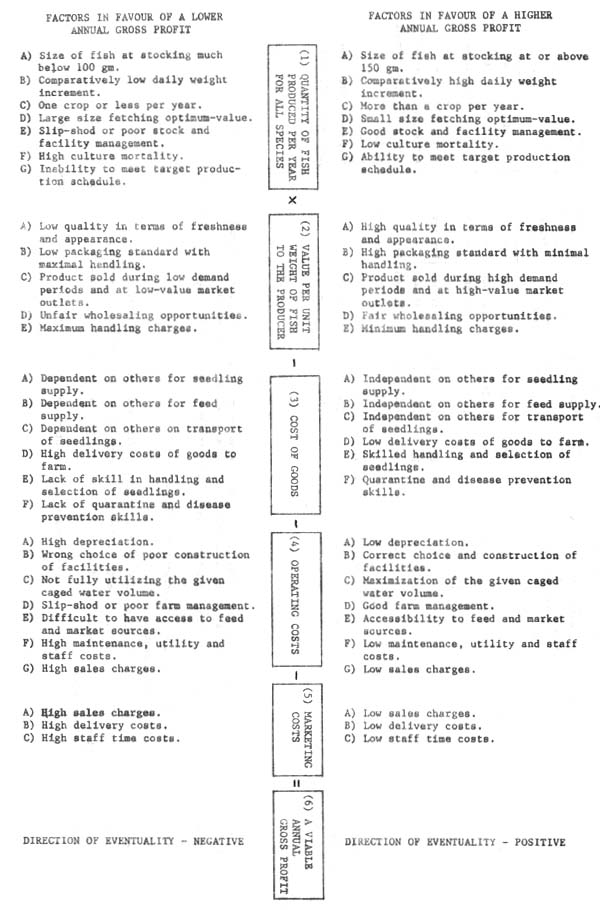
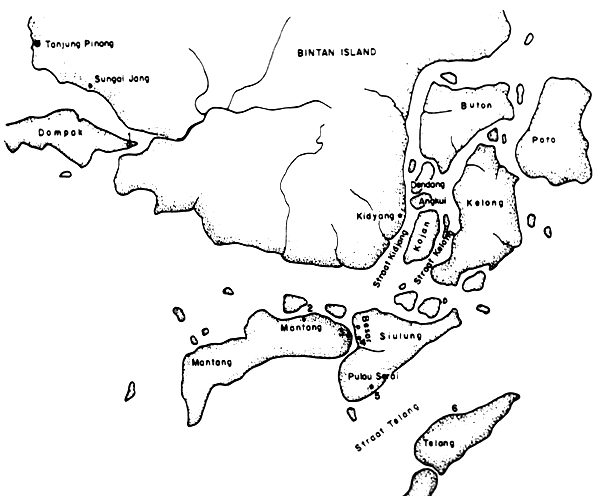
Fig. 1 Southern part of Bintan island, Riou province showing the locations of the six selected sites
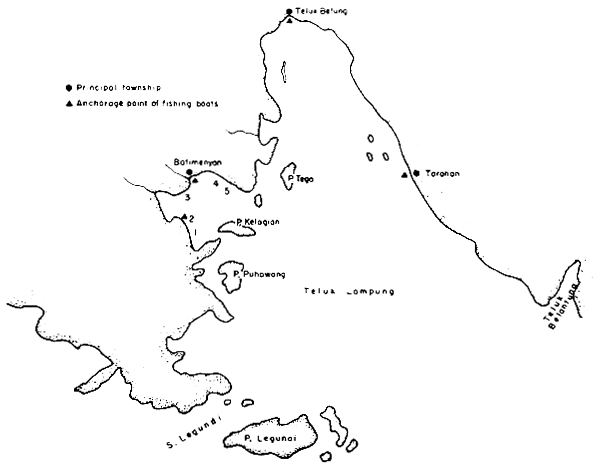
Fig. 2 Teluk Lampung, showing the five sites in the bay off Batimenyan, Sumatra
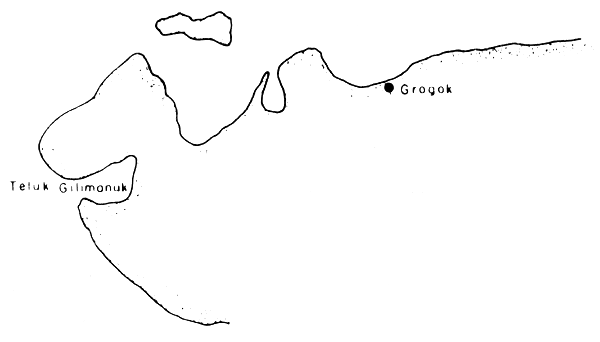
Fig. 3 Potential cage culture sites in northeast Bali, showing the location of Teluk Gilimanuk and the deep cave east of Grogok, Bali Island

Fig. 2 Southeastern tip of east Java

Fig. 4b Grajagan Bay, Peturon Bay and the Segara Anakan, East Java showing the vigorous mixing of marine and estuarine waters at the mouth of the latter
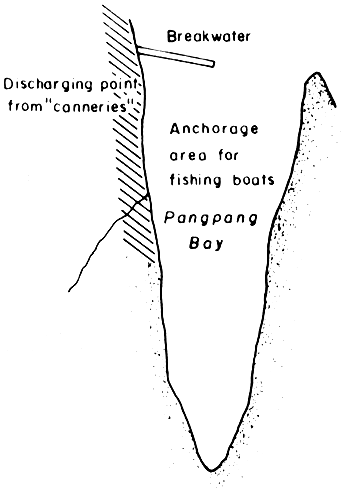
Fig. 4a Pangpang Bay, East Java, showing its deep indentation, breakwater, and the densely populated western shore


Fig. 5 Genteng Bay of Gili Genteng, southeast of Madura proper, East Java, showing location of coral reefs and the deep wide channel in between to provide excellent sites for location of floating fish cages